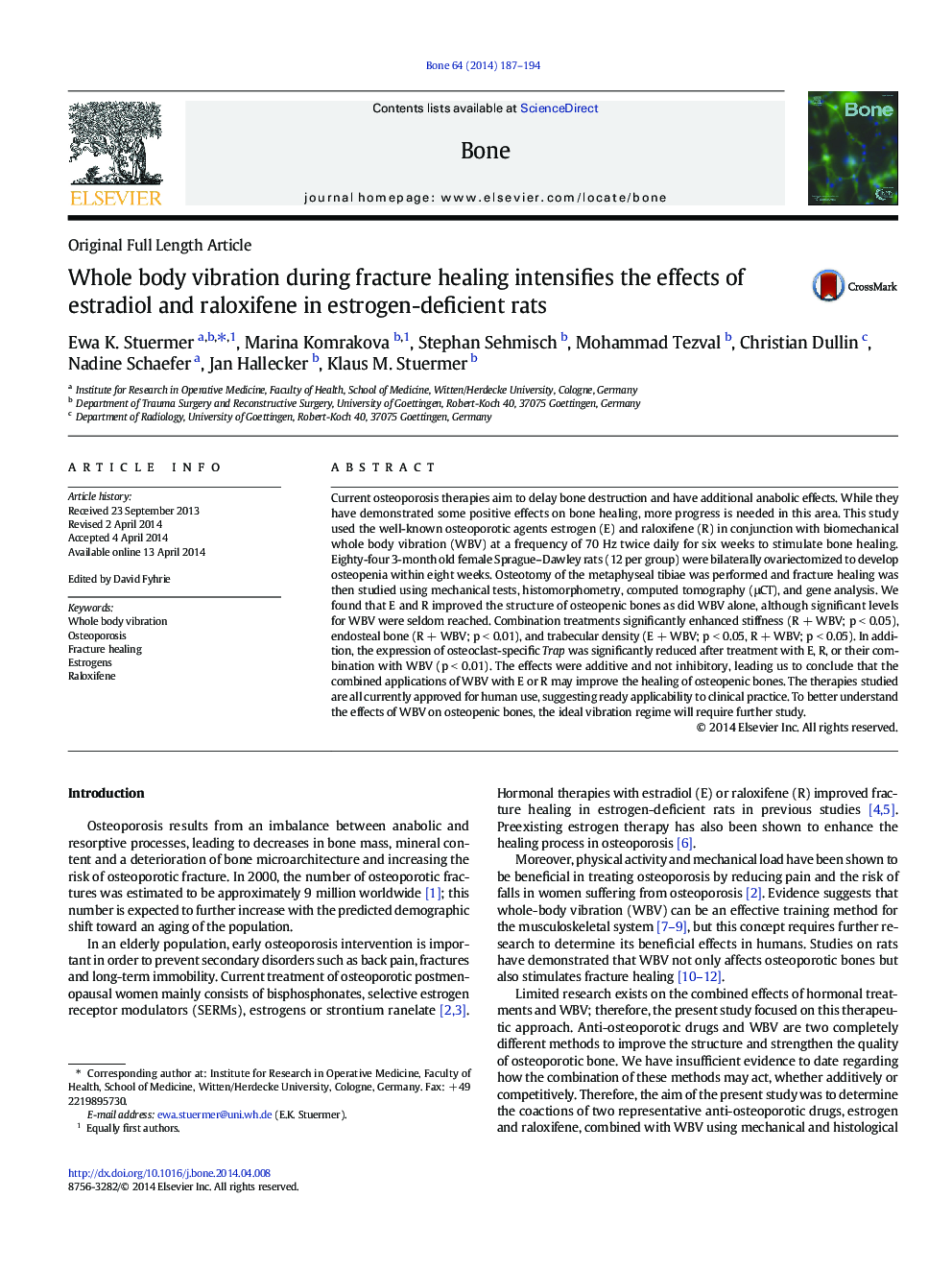| Article ID | Journal | Published Year | Pages | File Type |
|---|---|---|---|---|
| 5890067 | Bone | 2014 | 8 Pages |
Abstract
Current osteoporosis therapies aim to delay bone destruction and have additional anabolic effects. While they have demonstrated some positive effects on bone healing, more progress is needed in this area. This study used the well-known osteoporotic agents estrogen (E) and raloxifene (R) in conjunction with biomechanical whole body vibration (WBV) at a frequency of 70 Hz twice daily for six weeks to stimulate bone healing. Eighty-four 3-month old female Sprague-Dawley rats (12 per group) were bilaterally ovariectomized to develop osteopenia within eight weeks. Osteotomy of the metaphyseal tibiae was performed and fracture healing was then studied using mechanical tests, histomorphometry, computed tomography (μCT), and gene analysis. We found that E and R improved the structure of osteopenic bones as did WBV alone, although significant levels for WBV were seldom reached. Combination treatments significantly enhanced stiffness (R + WBV; p < 0.05), endosteal bone (R + WBV; p < 0.01), and trabecular density (E + WBV; p < 0.05, R + WBV; p < 0.05). In addition, the expression of osteoclast-specific Trap was significantly reduced after treatment with E, R, or their combination with WBV (p < 0.01). The effects were additive and not inhibitory, leading us to conclude that the combined applications of WBV with E or R may improve the healing of osteopenic bones. The therapies studied are all currently approved for human use, suggesting ready applicability to clinical practice. To better understand the effects of WBV on osteopenic bones, the ideal vibration regime will require further study.
Related Topics
Life Sciences
Biochemistry, Genetics and Molecular Biology
Developmental Biology
Authors
Ewa K. Stuermer, Marina Komrakova, Stephan Sehmisch, Mohammad Tezval, Christian Dullin, Nadine Schaefer, Jan Hallecker, Klaus M. Stuermer,
